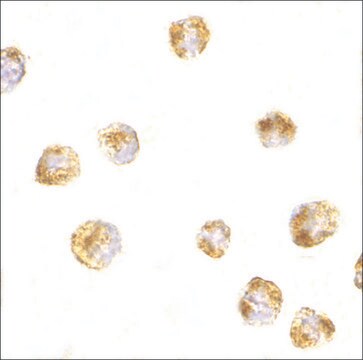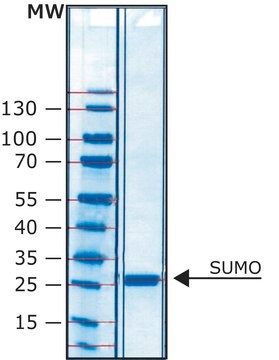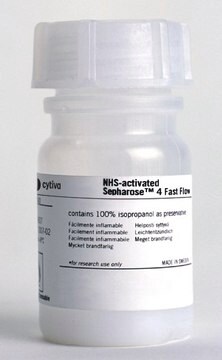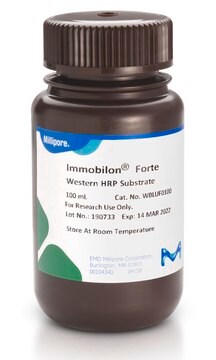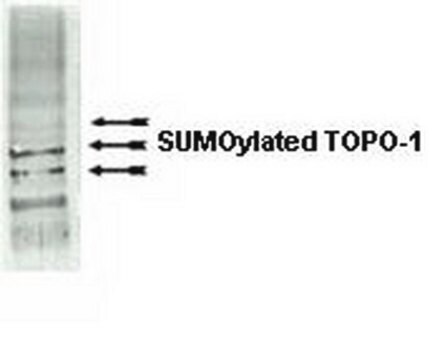MABS2039
Anti-SUMO-2/3 Antibody, clone 8A2
clone 8A2, from mouse
Sinónimos:
Small ubiquitin-related modifier 2, HSMT3, SMT3 homolog 2, SUMO-3, Zentrin-2, Ubiquitin-like protein SMT3B, Smt3B
About This Item
Productos recomendados
origen biológico
mouse
Nivel de calidad
forma del anticuerpo
purified immunoglobulin
tipo de anticuerpo
primary antibodies
clon
8A2, monoclonal
reactividad de especies
human
envase
antibody small pack of 25 μg
técnicas
immunocytochemistry: suitable
immunoprecipitation (IP): suitable
western blot: suitable
isotipo
IgG2bκ
Nº de acceso NCBI
Condiciones de envío
ambient
modificación del objetivo postraduccional
unmodified
Información sobre el gen
human ... SUMO2(6613)
Descripción general
Especificidad
Inmunógeno
Aplicación
Signaling
Immunoprecipitation Analysis: A representative lot detected SUMO-2/3 in Immunoprecipitation applications (Zhu, S., et. al. (2009). Mol Cell. 33(5):570-80).
Western Blotting Analysis: A 1:500 dilution from a representative lot detected SUMO-2/3 in HeLa cell lysate (Courtesy of Christine Lee, Matunis Lab, John Hopkins University, Baltimore, Maryland USA).
Immunocytochemistry Analysis: A 1:500 dilution from a representative lot detected SUMO-2/3 in HeLa cells (Courtesy of Christine Lee, Matunis Lab, John Hopkins University, Baltimore, Maryland USA).
Immunocytochemistry Analysis: A representative lot detected SUMO-2/3 in Immunocytochemistry applications (Zhang, X.D., et. al. (2008). Mol Cell. 29(6):729-41; Rao, H.B., et. al. (2017) Science. 355(6323):403-407).
Immunocytochemistry Analysis: A 1:500 dilution from a representative lot detected SUMO-2/3 in HeLa cells.
Calidad
Western Blotting Analysis: 4 µg/mL of this antibody detected SUMO-2/3 in HeLa cell lysate.
Descripción de destino
Forma física
Almacenamiento y estabilidad
Otras notas
Cláusula de descargo de responsabilidad
¿No encuentra el producto adecuado?
Pruebe nuestro Herramienta de selección de productos.
Código de clase de almacenamiento
12 - Non Combustible Liquids
Clase de riesgo para el agua (WGK)
WGK 1
Punto de inflamabilidad (°F)
does not flash
Punto de inflamabilidad (°C)
does not flash
Certificados de análisis (COA)
Busque Certificados de análisis (COA) introduciendo el número de lote del producto. Los números de lote se encuentran en la etiqueta del producto después de las palabras «Lot» o «Batch»
¿Ya tiene este producto?
Encuentre la documentación para los productos que ha comprado recientemente en la Biblioteca de documentos.
Nuestro equipo de científicos tiene experiencia en todas las áreas de investigación: Ciencias de la vida, Ciencia de los materiales, Síntesis química, Cromatografía, Analítica y muchas otras.
Póngase en contacto con el Servicio técnico